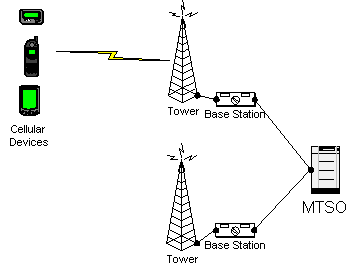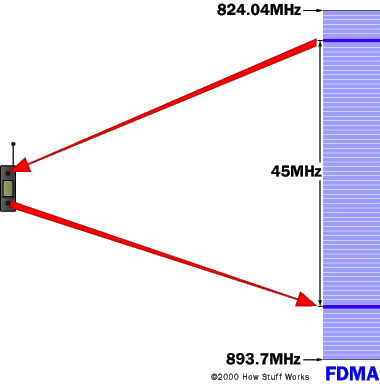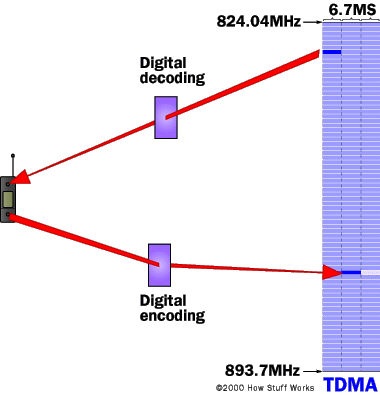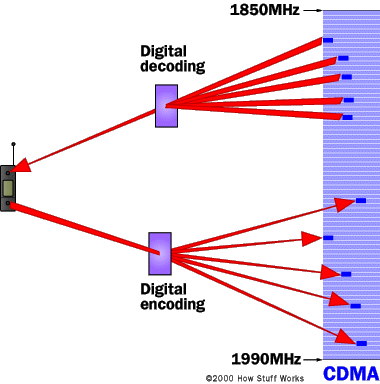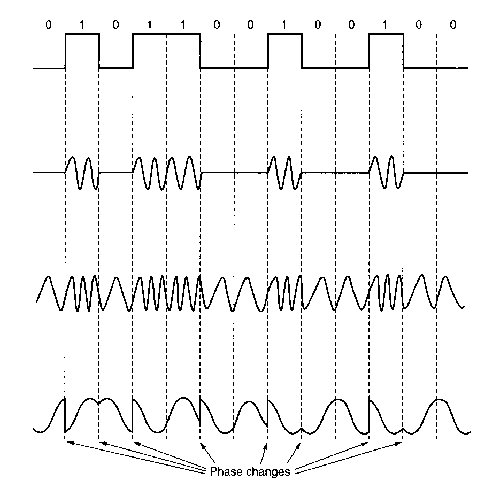|
Cells
For wireless communications, the process begins by carving a service area
into small areas called cells. A cell can range from 20 miles in diameter to hundreds
of feet in diameter, depending on the terrain and the capacity needs of the
system. Each cell is equipped with a radio transmitter/receiver which is
connected to base stations which in turn communicate with the switch.
By lowering the transmitter's power, the range of the radio frequencies
can be shaped to fit a single cell. In a simple system, a frequency range
(within the frequency range) is assigned for each cellular device. Then the
transmitter can generate modulated signals within the permitted range, and
the receiver (which must know what frequency range each transmitter is
using) will demodulate the signals. Those same frequencies can be used in
another cell not far away, with little chance of causing any interference.
As a mobile subscriber begins to leave the area of coverage of a particular cell,
the base station will note a decrease in the signal strength of the subscriber.
The base station serving the subscriber in conjunction with antennas in other cells
can note an increase in power as the subscriber moves toward a new cell. This
information is transmitted to the switch, which serves as a traffic cop. The switch
will continuously query neighboring cells to report the signal strength of the
subscriber moving toward them. If the signal strength of a neighboring cell
exceeds a predefined amount, the cell becomes a candidate for servicing the
subscriber.
The switch checks what frequencies are available in the cell the subscriber is
entering and passes information to the base station in the "gaining" cell, which
automatically changes the trasmit and receive frequencies used by the subscriber.
This process is referred to as cell handoff.
| 
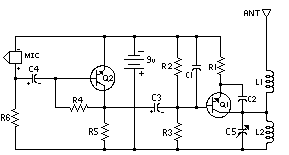
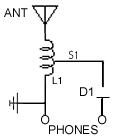 The two most important parts of the receiver are the antenna and the tuner.
An antenna is simply a wire or a metal stick that increases the amount of
metal the transmitter's waves can interact with. The antenna will receive
thousands of sine waves. The job of a tuner is to separate one sine wave from
the thousands of radio signals that the antenna receives. Tuners work using a
principle called resonance. That is, tuners resonate at, and amplify,
one particular frequency and ignore all the other frequencies in the air. Again,
one can create a resonator with a capacitor and an inductor.
The two most important parts of the receiver are the antenna and the tuner.
An antenna is simply a wire or a metal stick that increases the amount of
metal the transmitter's waves can interact with. The antenna will receive
thousands of sine waves. The job of a tuner is to separate one sine wave from
the thousands of radio signals that the antenna receives. Tuners work using a
principle called resonance. That is, tuners resonate at, and amplify,
one particular frequency and ignore all the other frequencies in the air. Again,
one can create a resonator with a capacitor and an inductor.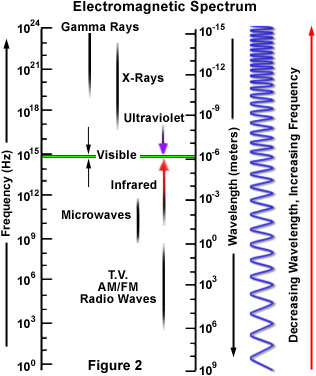 The frequency spectrum ranges from 1Hz to at least 10^23 Hz (as of the year 2001).
Bandwidth refers to the portion of the frequency spectrum allocated for a given
service; it is a measure of the width of a range of frequencies and not the
frequencies themselves. While many wireless applications publicize that they
operate at a precise frequency, actually that frequency is the center frequency
around which voice/data is modulated and can change as a subscriber travels from
one cell to another. The range of allowable frequencies then represents the bandwidth
supported by the particular application.
The frequency spectrum ranges from 1Hz to at least 10^23 Hz (as of the year 2001).
Bandwidth refers to the portion of the frequency spectrum allocated for a given
service; it is a measure of the width of a range of frequencies and not the
frequencies themselves. While many wireless applications publicize that they
operate at a precise frequency, actually that frequency is the center frequency
around which voice/data is modulated and can change as a subscriber travels from
one cell to another. The range of allowable frequencies then represents the bandwidth
supported by the particular application.